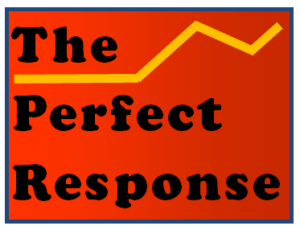Individuals who flatter themselves by being about “action” must ultimately face the undeniable fact that survival in American life depends on the water of communication. What we say matters. A lot.
In parched California, getting caught watering the sidewalk rather than a patch of grass is likely to annoy neighbors. And a clueless homeowner’s response that what is involved is “merely” water won’t help. Everyone understands what’s at stake. Water makes life possible.
My incredulity matches those neighbors when I hear someone dismiss another’s comments by noting that those expressions are “mere rhetoric.” In my field this is the professional equivalent of a thumb in the eye. I’ll give the phrase it’s due; it hangs around our public discussion like mosquitoes in a Michigan summer. But it’s a misguided thought.
We use the “mere” put-down to devalue someone’s words, usually on the mistaken assumption that we have other means for understanding each other. In the usual form, the preferred reality is to preference “deeds” over words. And that is sometimes the case. For example, we generally expect that people will act on their stated intentions: that their behavior matters. But even in such cases we are also interested in making conclusions about character based on spoken promises. Individuals who flatter themselves by being about “action” must ultimately face the undeniable fact that survival in American life depends on the water of communication. What we say matters. A lot.
The “mere rhetoric” mistake is often spoken by reporters and politicians, the very folks who most need to acknowledge the debt they owe to the fluency of others. Their fuzzy thinking sometimes comes with a statement such as this: “For the moment let’s set aside all the rhetoric about this subject and get to the point about what’s at stake.” This supposed set-aside is then followed by. . . well. . . more language. Staring at each other in complete silence isn’t much of an option. Not understanding our debt to words shows the same kind of lack of self awareness that allows someone to worry about the government “taking over” Medicare.
Over the centuries thinkers have wondered if there isn’t a better cure to misunderstanding than via verbal pathways. Most have usually ended up with a synthetic symbol system that mimics mathematics. No one ever misunderstands what “2” means. And we don’t think others are hurling abuse in our direction if they talk about a “dozen.” Mathematical language has the virtue and liability of being completely stipulative.
Football on television is functionally as much about the announcing as the action on the field. Try watching an entire game without the sound.
But our expressive needs require more. We revel in rhetoric that is loaded, judgmental, evocative and sometimes rude. We seek out people who use beautiful constructions that engross and engage. And this isn’t just in the realms of the novel or poetry. Football on television is functionally as much about the announcing as the action on the field. Try watching an entire game without the sound. Similarly, a judgment in the form of a letter grade often matters more to a student than their actual work. And parents rejoice when their young children begin to pass through the threshold of literacy.
To be sure, we are theoretically capable of stepping back from the rhetorical world. But the requirements are harsh and, for most of us, not very welcoming. Lock yourself away in a silent place. Don’t talk. Don’t listen to others. And try to control the verbal chatter of a rhetorical mind that can probably run circles around even your most loquacious relative. It’s not fun to be denied the gifts of utterance.
The scholar Kenneth Burke reminded us that “Language is equipment for living.” We are toilers and pleasure seekers in the information age, often allowing our bodies to wither while our heads surf through endless waves of verbiage. Even social scientists who pride themselves on being rigorous empiricists usually end up studying verbal behavior most of the time. As for the neuroscientists who often use brain scans to seek the origins of our actions? Well, that’s mere neuroscience. The human mind is more than the organ of the brain. It’s the source and signature of our verbally constructed selves.


